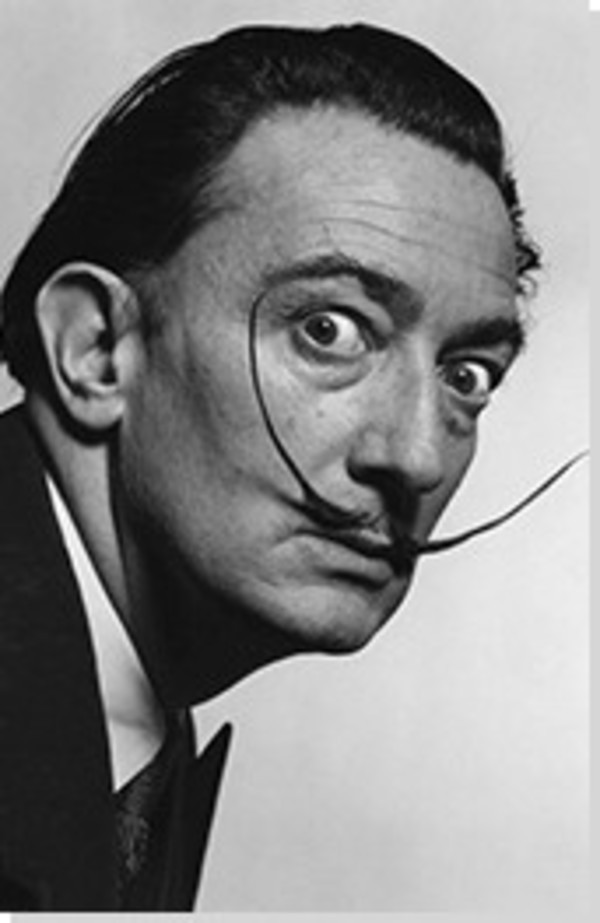Salvador Dali (1904-1989)Salvador Domingo Felipe Jacinto Dalí I Domènech, Marquis of Dalí de Púbol, better known as Salvador Dalí, Salvador Dali (1904-1989)was born on May 11, 1904, in Figueras, Spain, and died on January 23, 1989, in the same place.
Salvador was a well-known set designer, sculptor, draftsman, engraver, writer and especially a great painter. He is considered to be the greatest representative of surrealism for his pictorial creations of dreamlike, eccentric and bizarre, loaded with symbolism.
Salvador Dali (1904-1989) Salvador Domingo Felipe Jacinto Dalí I Domènech, Marquis of Dalí de Púbol, better known as Salvador Dalí, Salvador Dali (1904-1989)was born on May 11, 1904, in Figueras, Spain, and died on January 23, 1989, in the same place.
Salvador was a well-known set designer, sculptor, draftsman, engraver, writer and especially a great painter. He is considered to be the greatest representative of surrealism for his pictorial creations of dreamlike, eccentric and bizarre, loaded with symbolism.
Around 1916, Salvador Dalí had his first approach to painting when he spent some time in Cadaqués, where he would meet the family of the local painter Ramón Pichot. These allowed him to see the artist’s collection, bringing Dalí closer to impressionism.
In 1918, Dalí’s ingenuity had allowed him to learn quickly both Impressionism and Cubism.
In 1921, Salvador Dalí’s mother died because of uterine cancer, a fact that represents an emotional blow for Dalí, especially due to the fact that his father married Salvador’s aunt. Besides this, there was the opposition from his father to allow him to study painting. Dali would have to do it in Madrid, in the Royal Academy of Fine Arts, in order to be granted the title of professor.
Since his arrival at the School of Fine Arts, Dalí stood out for his paintings as much as for his eccentric image similar to Josep Margarit and Diego Velázquez. In 1925, he diminishes his attendance and for 1926 he would be expelled definitively after announcing that there was no teacher capable of evaluating him, emphasizing the incapacity of all of them. In the same year of his expulsion, Dalí traveled to Paris where he interacted with Pablo Picasso and Joan Miró, joining the latter in a surrealist group. At this time, he started showing the first features that would constitute his particular style, absorbing all influence of classical art and his contemporaries to mix and enhance their technique. Also, at that time he let his characteristic pointed mustache grow.
Dalí joined the surrealist group of the Montparnasse district of Paris, influencing the development of the artistic movement through the paranoiac-critical method, which consisted of using paranoia to create relations between objects that are not normally related. Salvador Dalí would buy a small house that he would expand, located in Portlligat. In this year, he would create one of his most recognized works “The persistence of memory” which is known to be a representation that defies time.
By 1980, his health and the progressive increase of his Parkinson’s incapacitated him from continuing with his artistic activity. In 1982, Dalí was awarded the title of Marqués de Púbol, that same year his wife died. After a suicide attempt, he was transferred to Figueras, where he died on January 23, 1929, due to cardiorespiratory arrest while listening to his favorite album: Tristan and Isolde by Richard Wagner.
